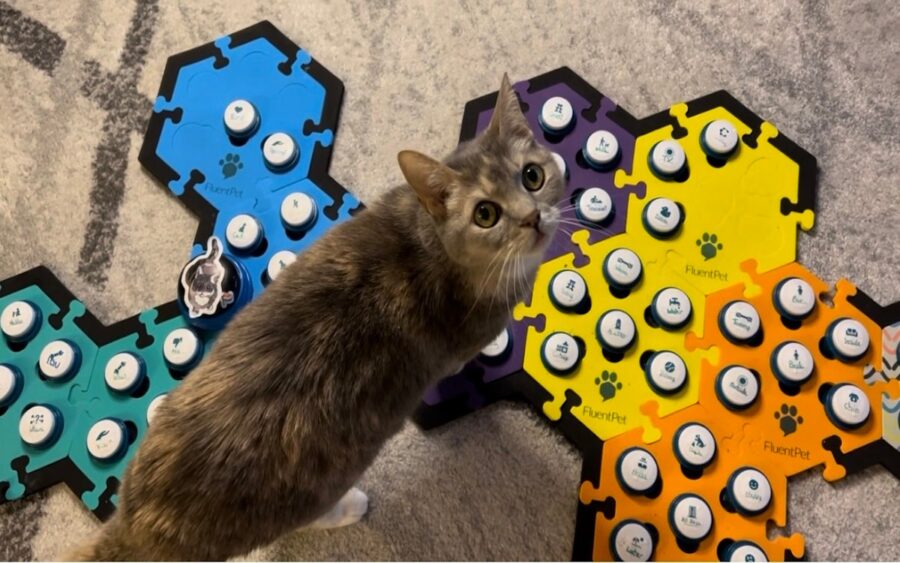
This story is from The Pulse, a weekly health and science podcast.
Find it on Apple Podcasts, Spotify, or wherever you get your podcasts.
Of the millions of cats on YouTube — cats who step on their owners’ sleeping faces, cats who knock over toddlers, cats who push their cat siblings down the stairs — one of them stands out as especially sassy: Billi the Talking Cat.
Officially, Billi’s fame came from being one of the first cats on social media to use augmentative and alternative communication (or AAC) — a technique that involves using recordable buttons to communicate.
Though in reality, Billi — a 14-year-old light-gray tortie with startled green eyes — is better known as the “mad cat,” thanks in large part to a video by The Dodo entitled “This Cat’s Favorite Word Is Exactly What You’d Expect.”
In it — and owner Kendra Baker’s scores of other social media videos — Billi is shown making demands through her buttons: for food, for cuddles, for playtime. And when she doesn’t get what she wants, she defaults to her favorite word: “mad.”
“Billi is truly a sweetheart overall — like she is very cuddly; she wants to be around humans,” Baker said. “She is a cat, though. And we all know cats have a little bit of a personality.”
Billi’s always been a bit of a troublemaker — as evidenced by her first encounter with Baker.
“She was running across the street and caused a car accident,” Baker said. “Thankfully, she was okay, but I jumped out and I grabbed her, and I tried so hard to find her home. No one claimed her, so she became mine.”
Origins of the recordable button boom
Baker’s a veterinarian, and has always been into enrichment. She’s taught Billi to do what are usually considered dog tricks — shaking paws, doing spins — but she never imagined that Billi would be capable of language … until she started watching some of Christina Hunger’s videos.
Hunger is a speech language pathologist who, in 2019, pioneered the use of AAC with her dog Stella, who made headlines as the world’s first talking dog.
(The approach, as used with animals, has since been renamed augmentative interspecies communication, or AIC, to avoid confusion with AAC used by and for non-verbal humans.)
In interviews, Hunger says it all started when she noticed that Stella, then a puppy, was demonstrating communication skills that were similar to those of toddlers right before they start talking. That gave Hunger an idea.
“I used Augmentative and Alternative Communication (AAC) devices in my practice to help my patients express themselves with words,” she writes on her website. “Since dogs can understand words, could Stella use an AAC device to express herself the same way my patients did?”
The answer, according to Hunger and her Instagram, was yes. Since 2019, Stella has learned dozens more words — in the process, inspiring thousands of other cat and dog owners to try the same with their pets.